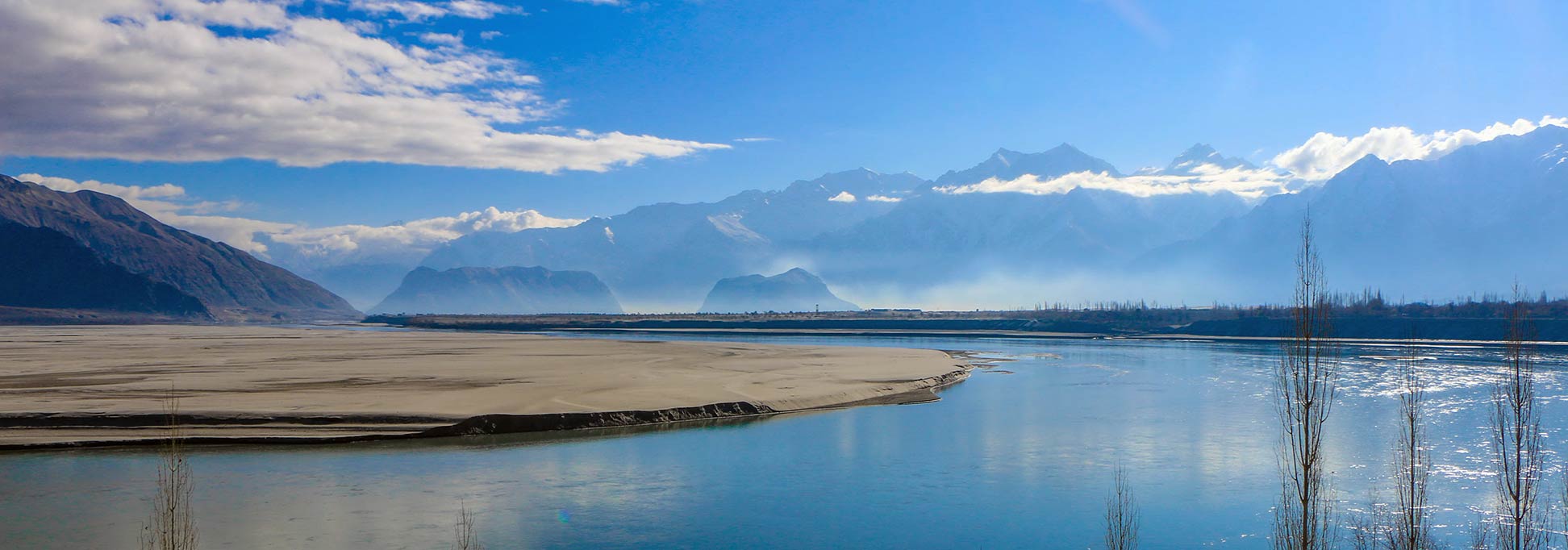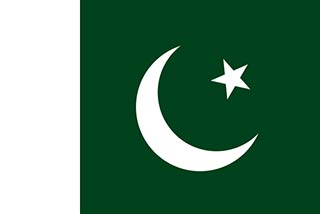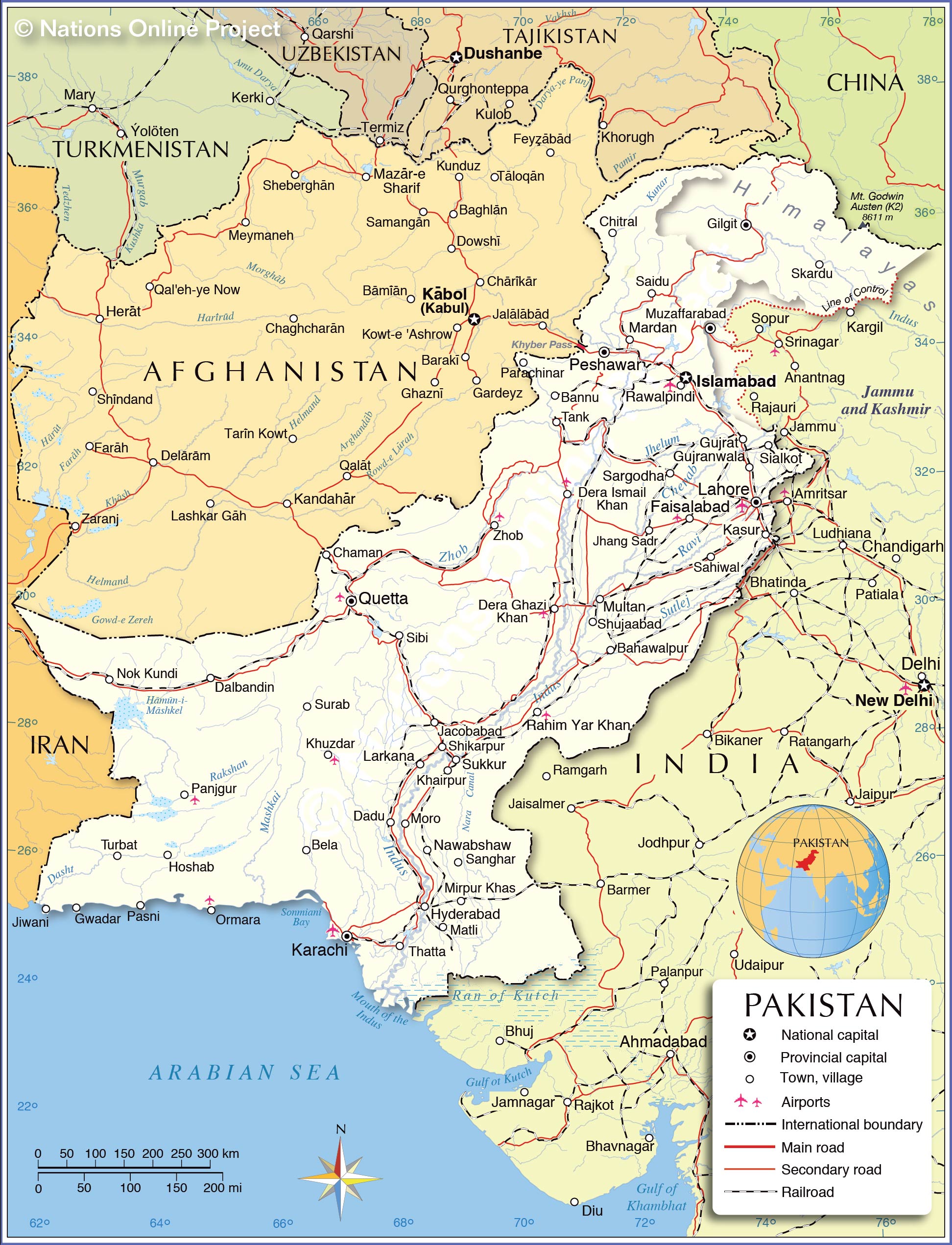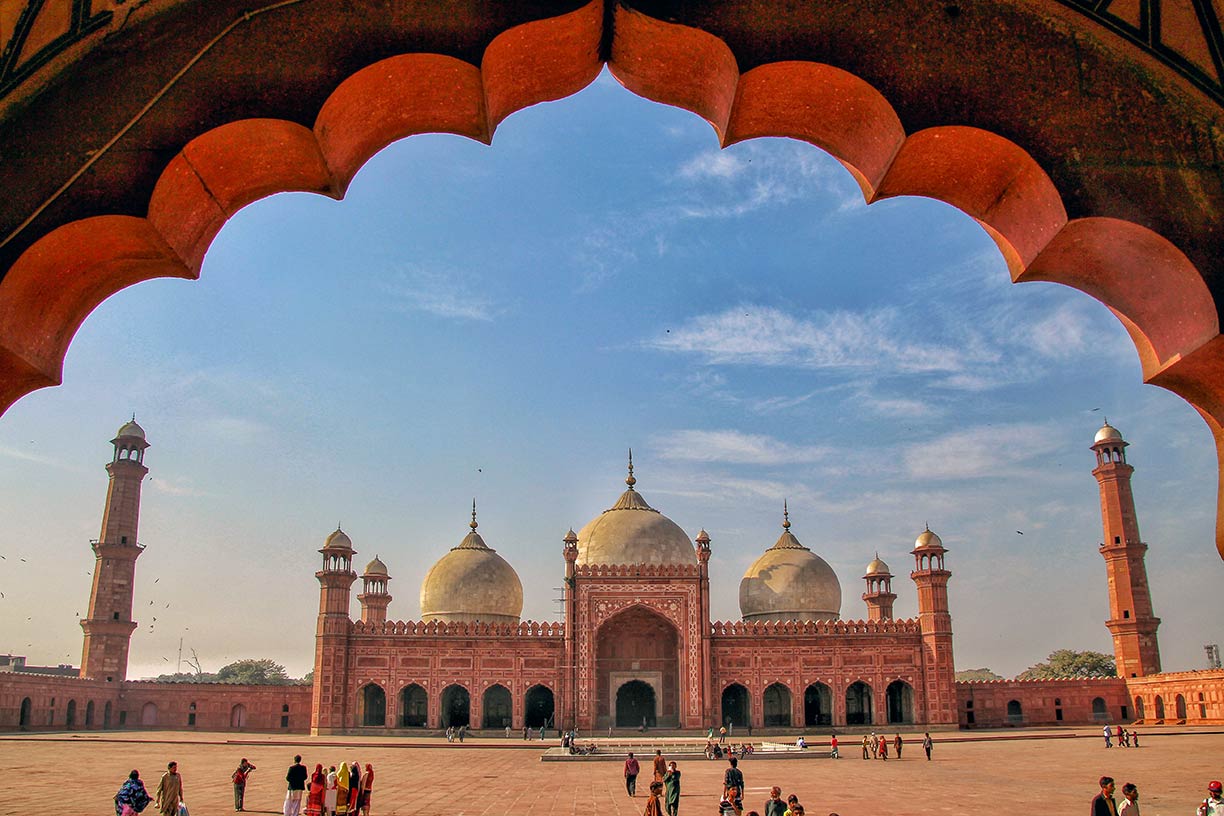Map of Pakistan, South Asia

Indus river at Skardu, the largest city in the Gilgit-Baltistan region of Pakistan.
Image: Akbar Khan Niazi
About Pakistan

Pakistan occupies an area of 796,095 km², compared it is slightly larger than Turkey (783,562 km²) or somewhat less than twice the size of the U.S. state of California.
Pakistan is the world’s sixth-most populous country with a population of 208 million people (data from PBoS, 2018). The federal capital is Islamabad. Main port, largest city and economic hub is Karachi; the second largest city is Lahore. Other major Pakistani cities are Faisalabad, Rawalpindi, Multan, Gujranwala, Hyderabad, Peshawar, and Quetta.
Spoken languages are Urdu, English (both official), Punjabi, Sindhi, and Pashto.
Map of Pakistan

Political Map of Pakistan
The map shows Pakistan and surrounding countries with international borders, the national capital Islamabad, province capitals, major cities, main roads, railroads, and major airports.
 You are free to use above map for educational purposes, please refer to the Nations Online Project.
You are free to use above map for educational purposes, please refer to the Nations Online Project.

Political Map of Pakistan
The map shows Pakistan and surrounding countries with international borders, the national capital Islamabad, province capitals, major cities, main roads, railroads, and major airports.
More about Pakistan

Mughal era Badshahi Mosque in Lahore, the capital of Punjab, Pakistan. The Badshahi Mosque, Lahore is on UNESCO's tentative list of World Heritage Sites.
Photo: Fassifarooq
Pakistan's terrain is characterized by the flat Indus plain (part of the Indo-Gangetic Plain), crossed by the Indus river and its tributaries. The Indus is the country's longest river and an essential water resource, but it also causes floods and mudflows.
Pakistan's area northeast of the capital Islamabad is dominated by mountains of the Himalayas, known as the Karakoram, the second highest mountain range in the world. The highest peak in the country is K2 with 8,611 m; it is the second-highest mountain on Earth, located on the border between Pakistan and China in the Himalayas. The mountain is also known as Mt. Godwin-Austen, Chhogori/Qogir, and Ketu/Kechu.
Wedged between the Arabian and the Indian tectonic plates is the Iranian Plateau; the Pakistani portion of the plateau is known as the Balochistan plateau, part of the Eurasian Plate. Balochistan is an arid desert and mountainous region in south-western Asia.
Cities and Towns in Pakistan
Depicted on the map are the location of following Pakistani cities and towns (ordered by provinces, province capital in parentheses):
Gilgit-Baltistan (Gilgit)
Chitral, Mardan, Saidu, and Skardu.
North-West Frontier Province or Khyber Pakhtunkhwa (Peshawar)
Tank, Bannu, Mardan, Chitral, and Saidu.
Azad Kashmir (Muzaffarabad)
Federally Administered Tribal Areas (Peshawar)
Parachinar
Punjab (Lahore)
Bahawalpur, Dera Ghazi Khan, Dera Ismail Khan, Faisalabad, Gujranwala, Gujrat, Jhang Sadr, Kasur, Multan, Rahimyar Khan, Rawalpindi, Sahiwal, Sargodha, Shujaabad, and Sialkot.
Balochistan (Quetta)
Jiwani, Gwadar, Pasni, Ormara, Panjgur, Surab, Nok Kundi, Sibi, Chaman, Zhob, Dalbandin, Khuzdar, Belaurbat, and Hoshab.
Sind (Karachi)
Jacobabad, Shikarpur, Hyderabad, Mirpur Khas, Nawabshaw, Khairpur, Larkana, Sukkur, Sanghar, Matli, Thatta, Moro, and Dadu.
Depicted on the map are the location of following Pakistani cities and towns (ordered by provinces, province capital in parentheses):
Gilgit-Baltistan (Gilgit)
Chitral, Mardan, Saidu, and Skardu.
North-West Frontier Province or Khyber Pakhtunkhwa (Peshawar)
Tank, Bannu, Mardan, Chitral, and Saidu.
Azad Kashmir (Muzaffarabad)
Federally Administered Tribal Areas (Peshawar)
Parachinar
Punjab (Lahore)
Bahawalpur, Dera Ghazi Khan, Dera Ismail Khan, Faisalabad, Gujranwala, Gujrat, Jhang Sadr, Kasur, Multan, Rahimyar Khan, Rawalpindi, Sahiwal, Sargodha, Shujaabad, and Sialkot.
Balochistan (Quetta)
Jiwani, Gwadar, Pasni, Ormara, Panjgur, Surab, Nok Kundi, Sibi, Chaman, Zhob, Dalbandin, Khuzdar, Belaurbat, and Hoshab.
Sind (Karachi)
Jacobabad, Shikarpur, Hyderabad, Mirpur Khas, Nawabshaw, Khairpur, Larkana, Sukkur, Sanghar, Matli, Thatta, Moro, and Dadu.
- Get link
- X
- Other Apps
- Get link
- X
- Other Apps
Comments
Post a Comment